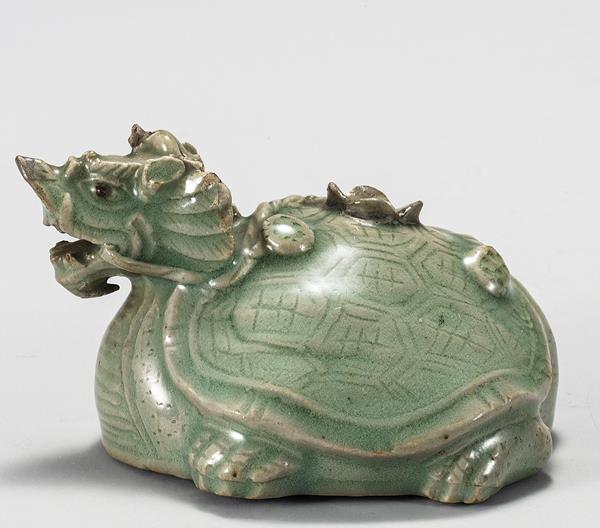
Dating to the Goryeo Dynasty (935–1392 C.E.), this celadon water-dropper is fashioned into the shape of a tortoise with a dragon’s head—imagery that is commonly found adorning monument pedestals during this period. Water-droppers such as this one were crafted with two small holes, one for adding water and a spout for dispensing it. The spout on this water-dropper is formed by the dragon’s mouth, which holds a lotus stalk. The water hole is located on the tortoise’s back, encircled by a petal-shaped decoration and incised with the Chinese character for “king.”

Water-droppers of this type could be made from a variety of materials, including ceramic, bronze, copper, or jade. Celadon vessels, such as this one, were popular during the Goryeo period and fashioned by finishing ceramics with a jade-like glaze. The unique color is owed to the raw materials used in the production process—iron in the clay, and manganese oxide and quartz particles in the glaze—as well as the firing conditions in the kiln (a low temperature and a reduction of oxygen during firing).
Used in calligraphy and ink paintings, water-droppers released only one or two drops at a time to properly prepare the liquid ink. In this process, a stick of ink (carbon soot mixed with animal-based glue) is ground against an inkstone with a drop or two of water on it. The particles from the stick mix with the water to create the liquid ink.
Already a library member? Log in here.
Institution user? Log in with your IP address.

